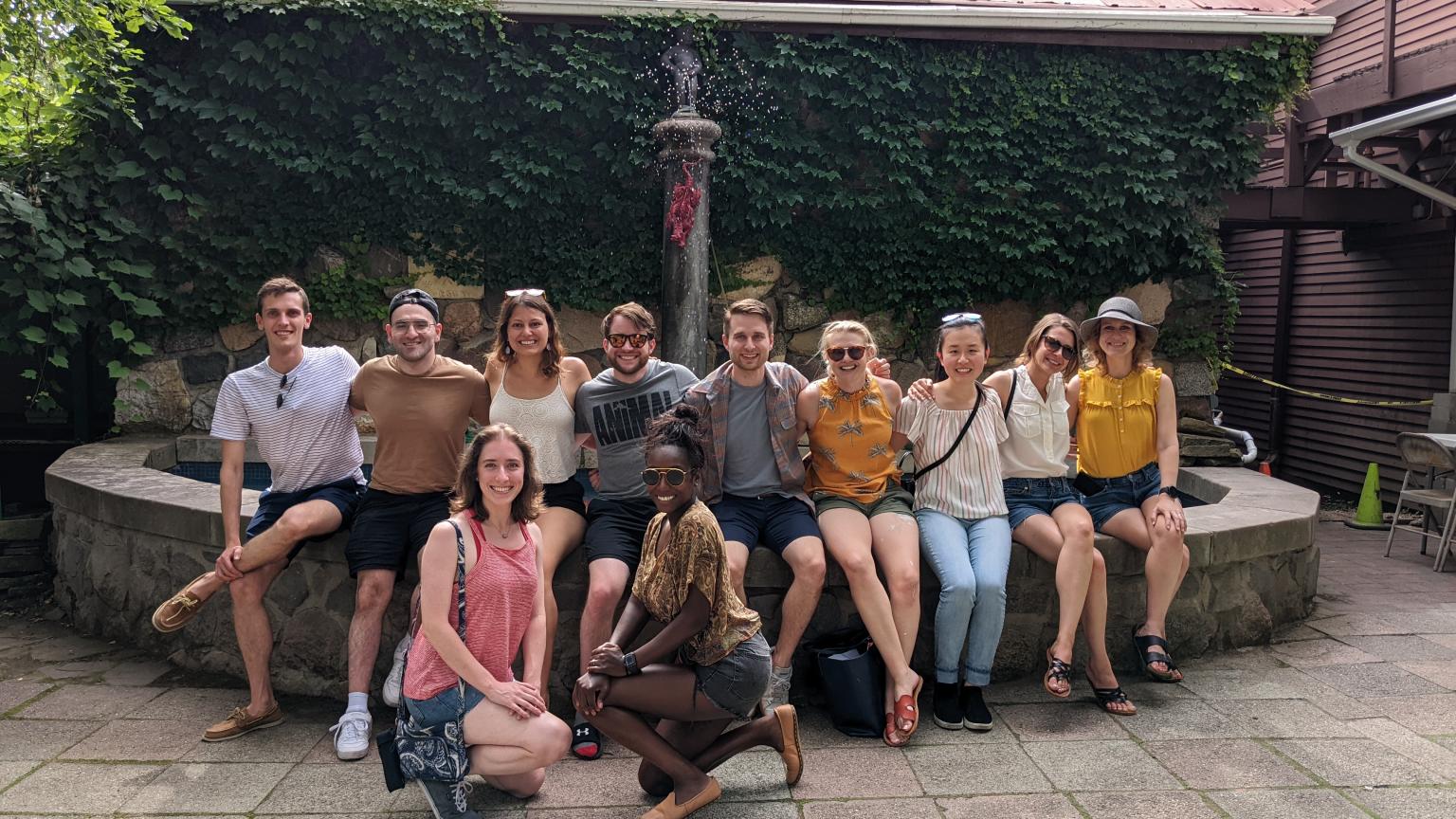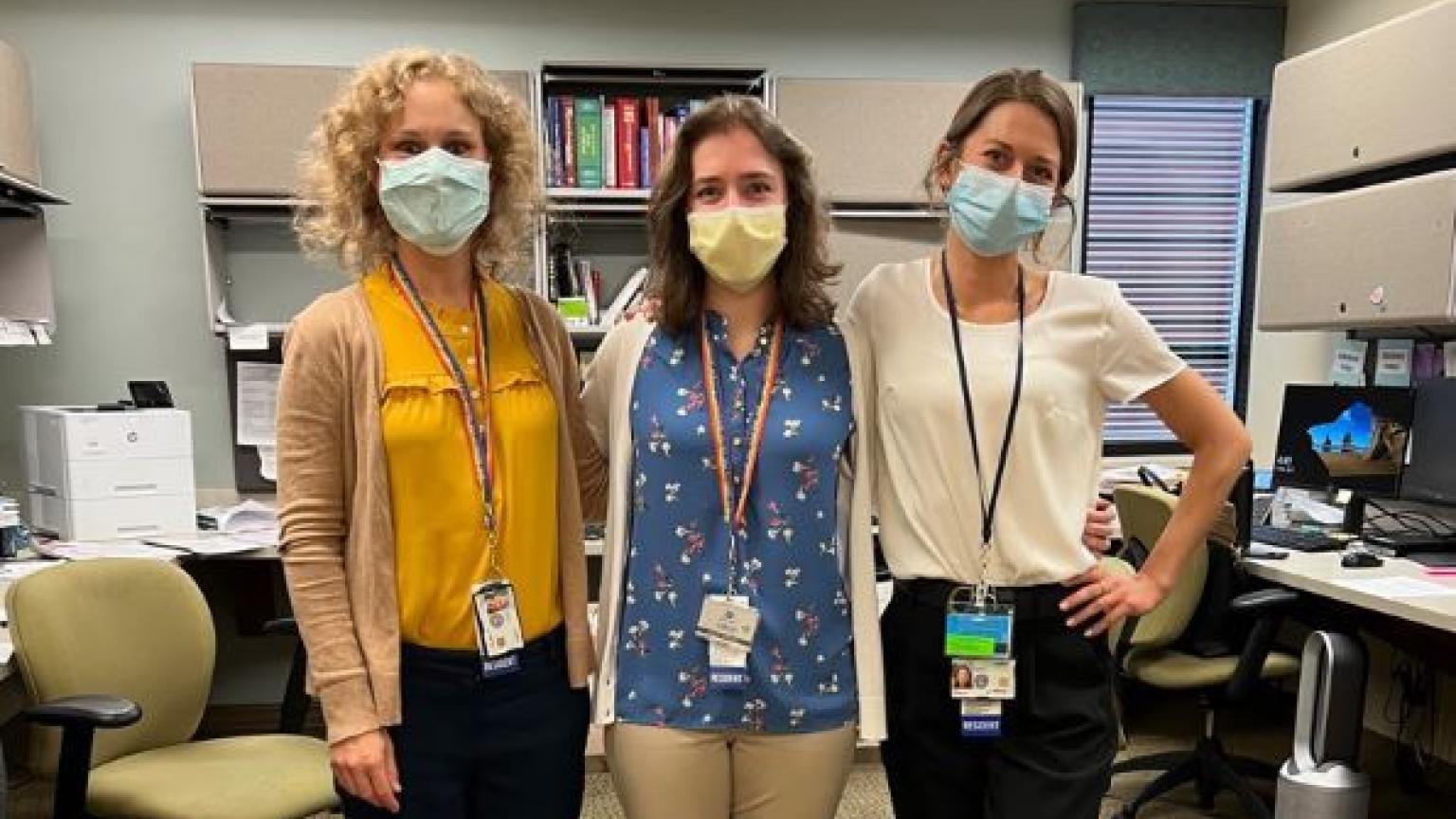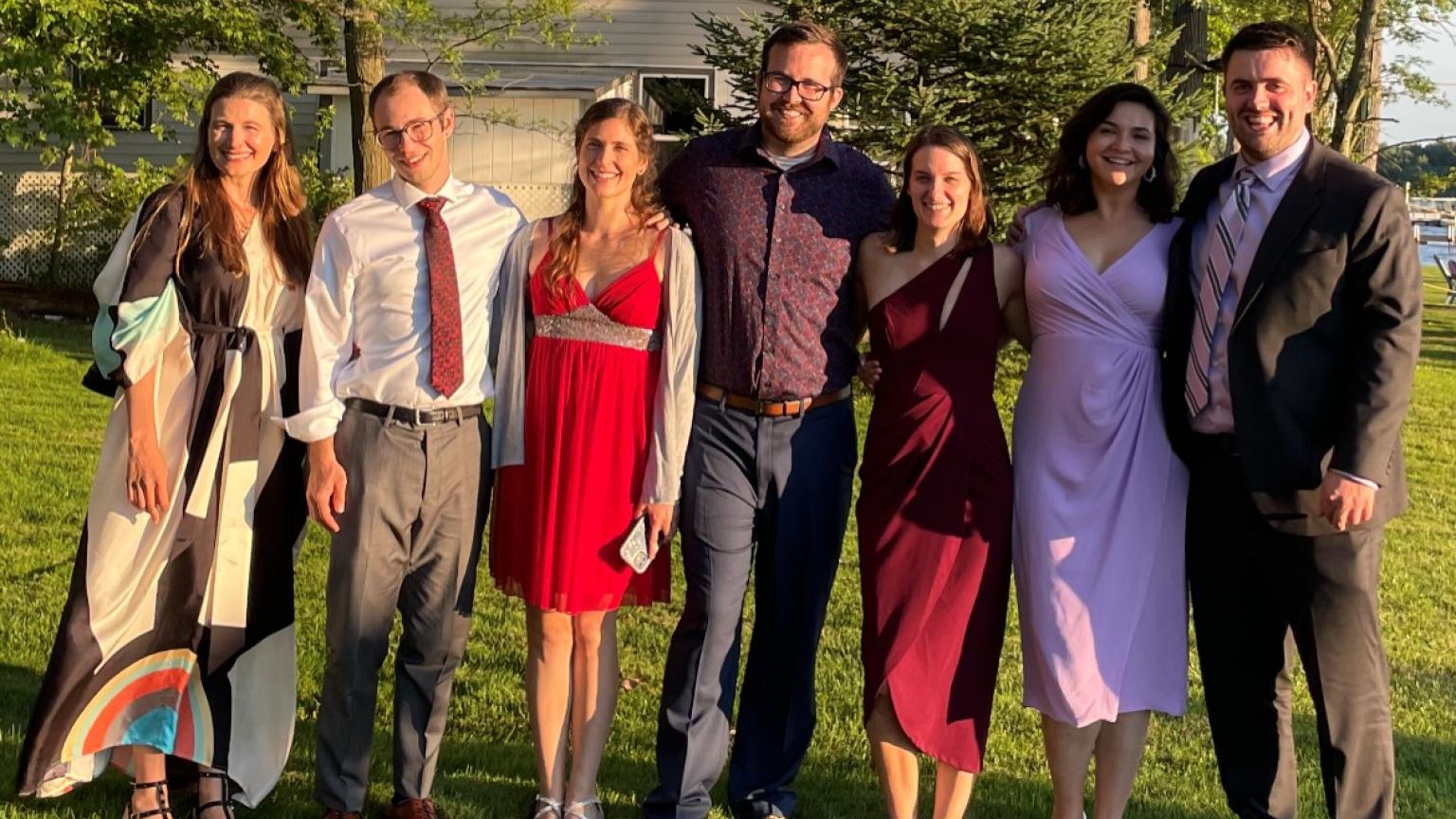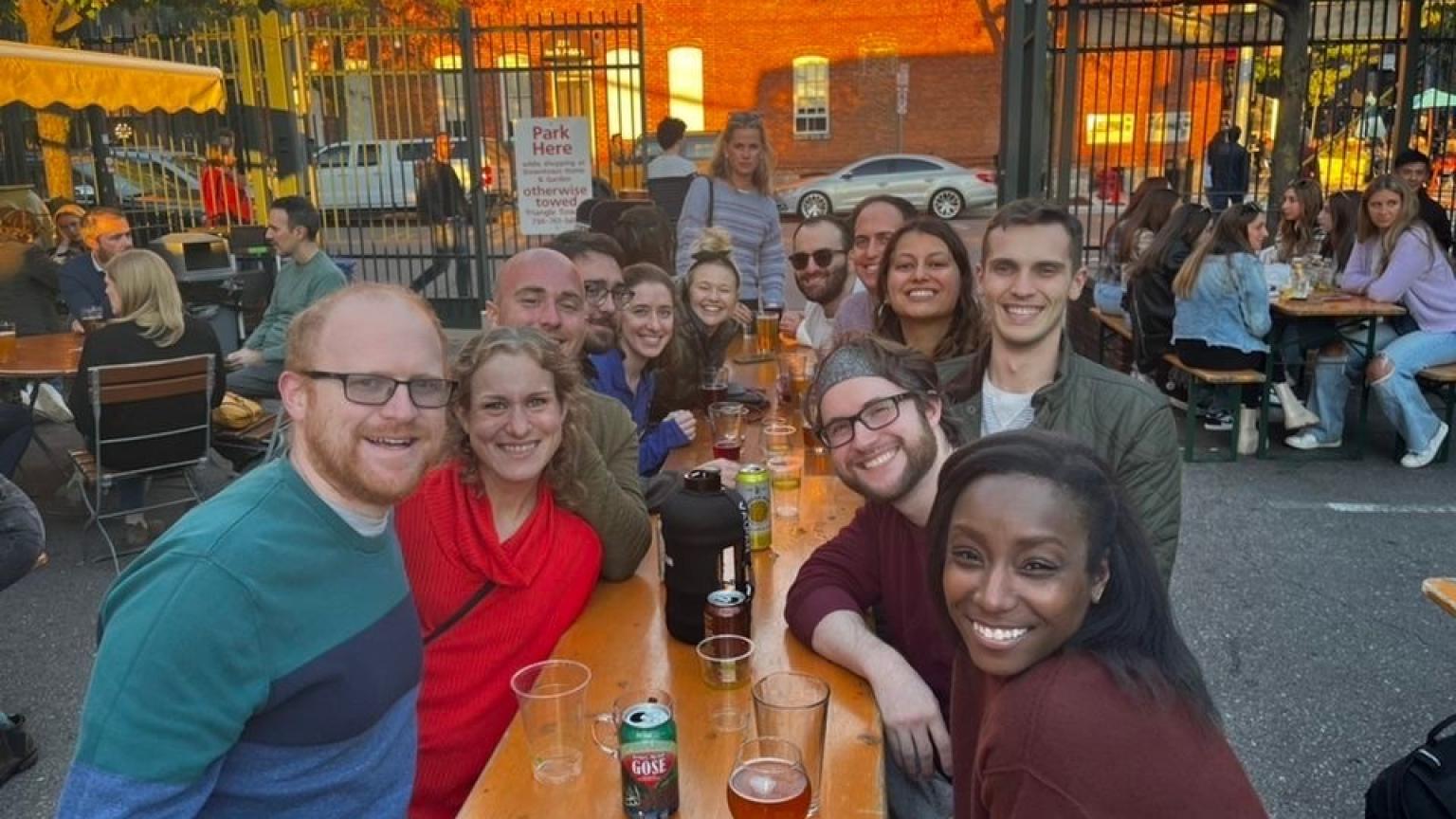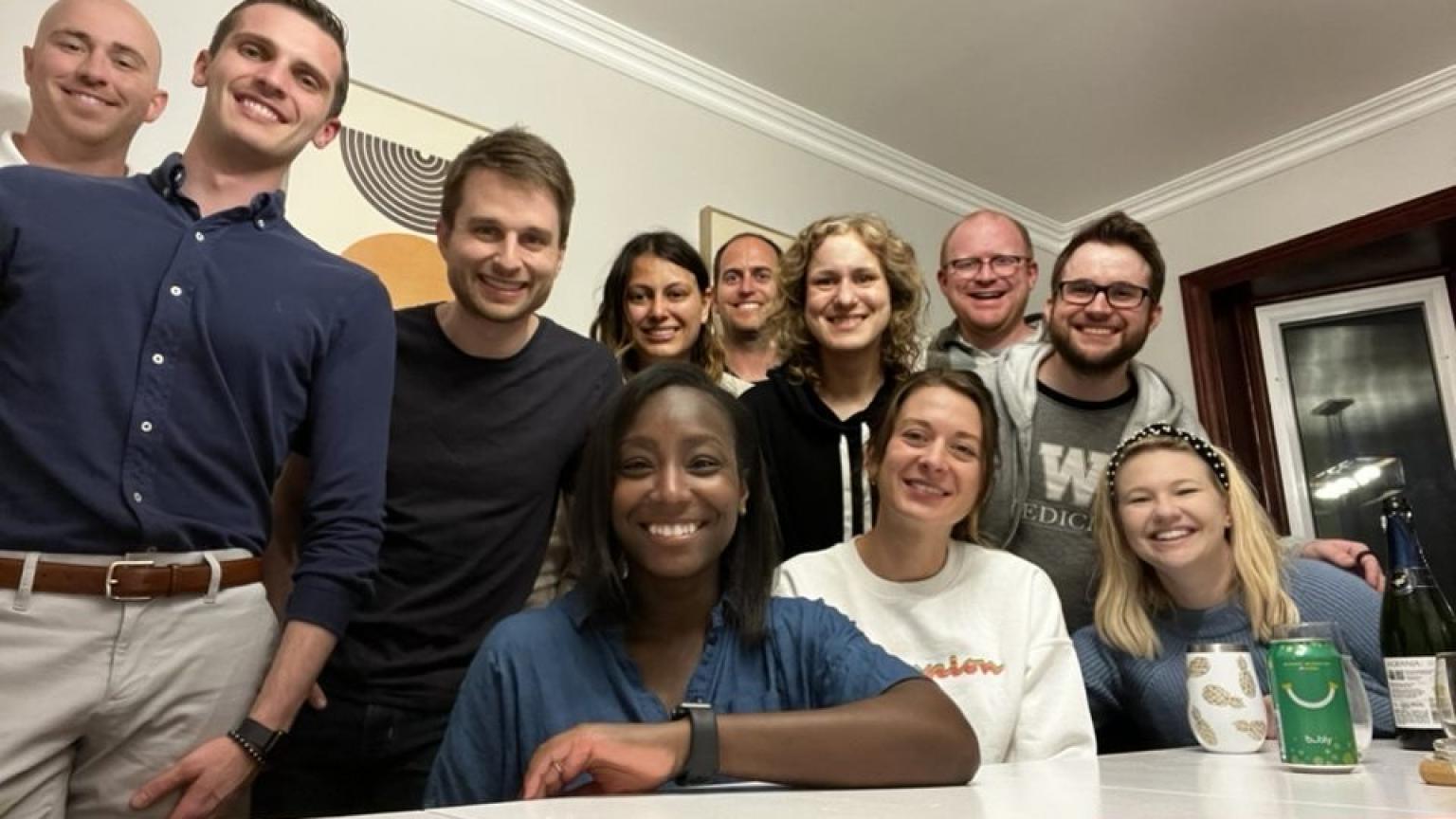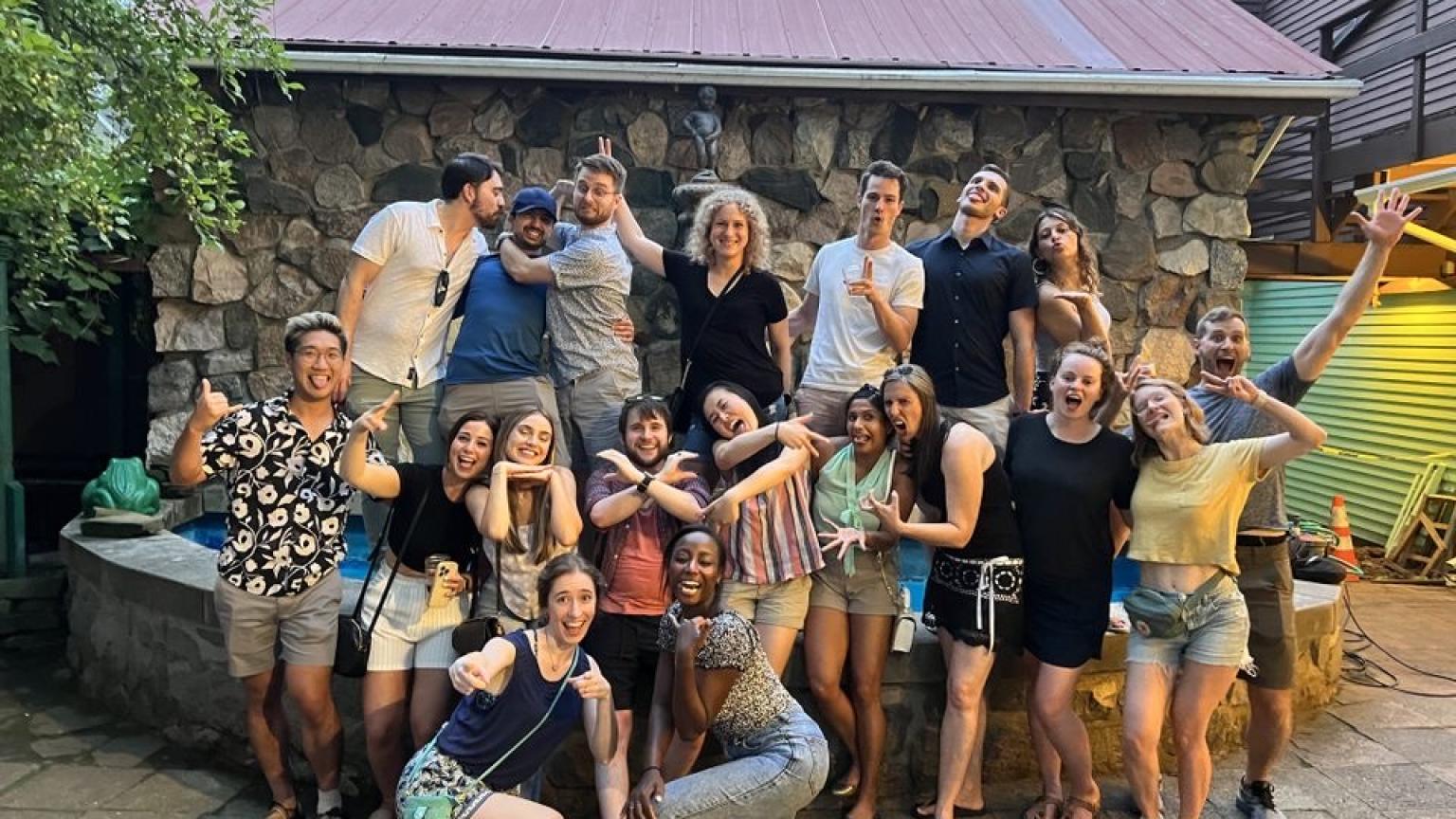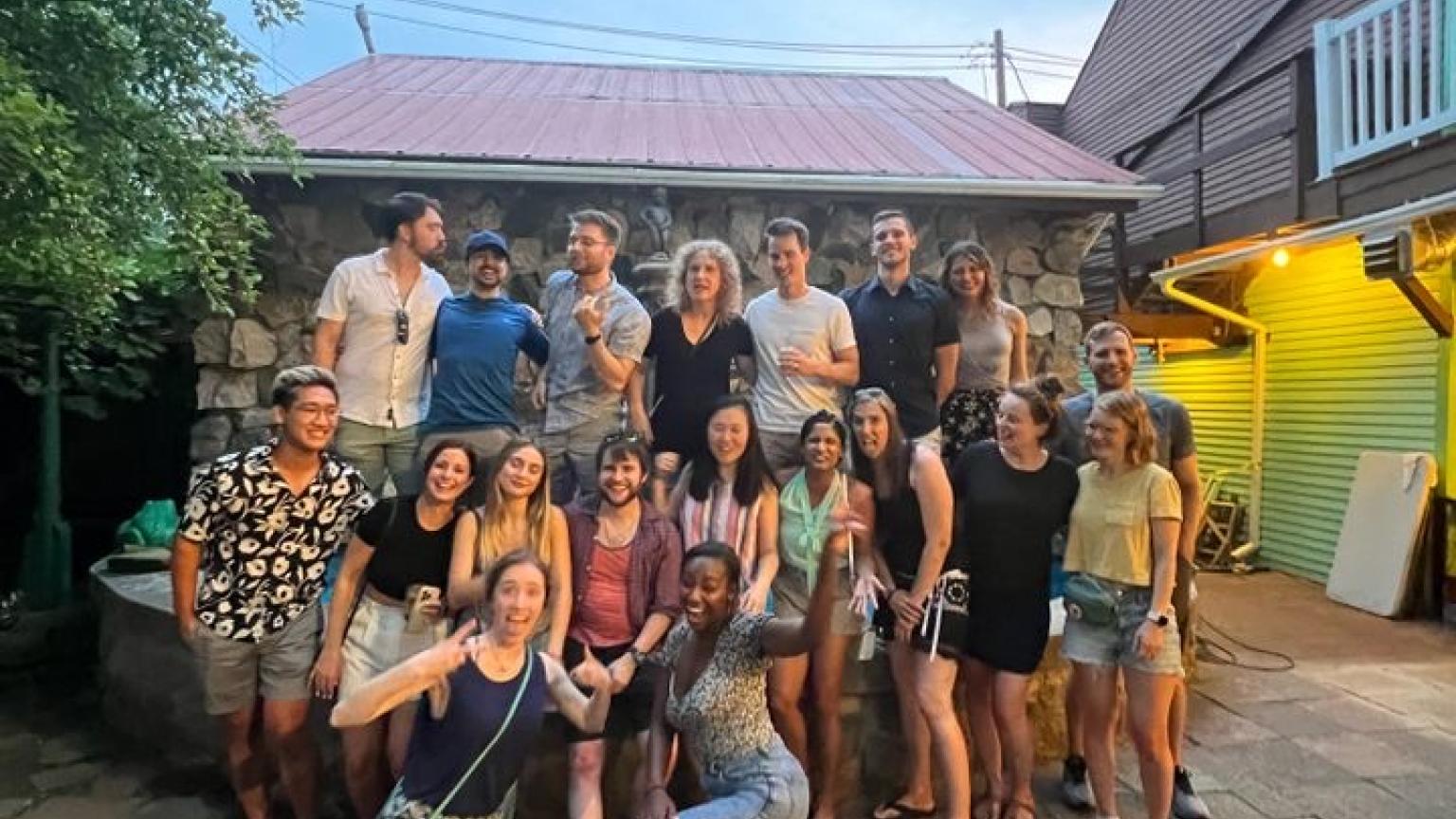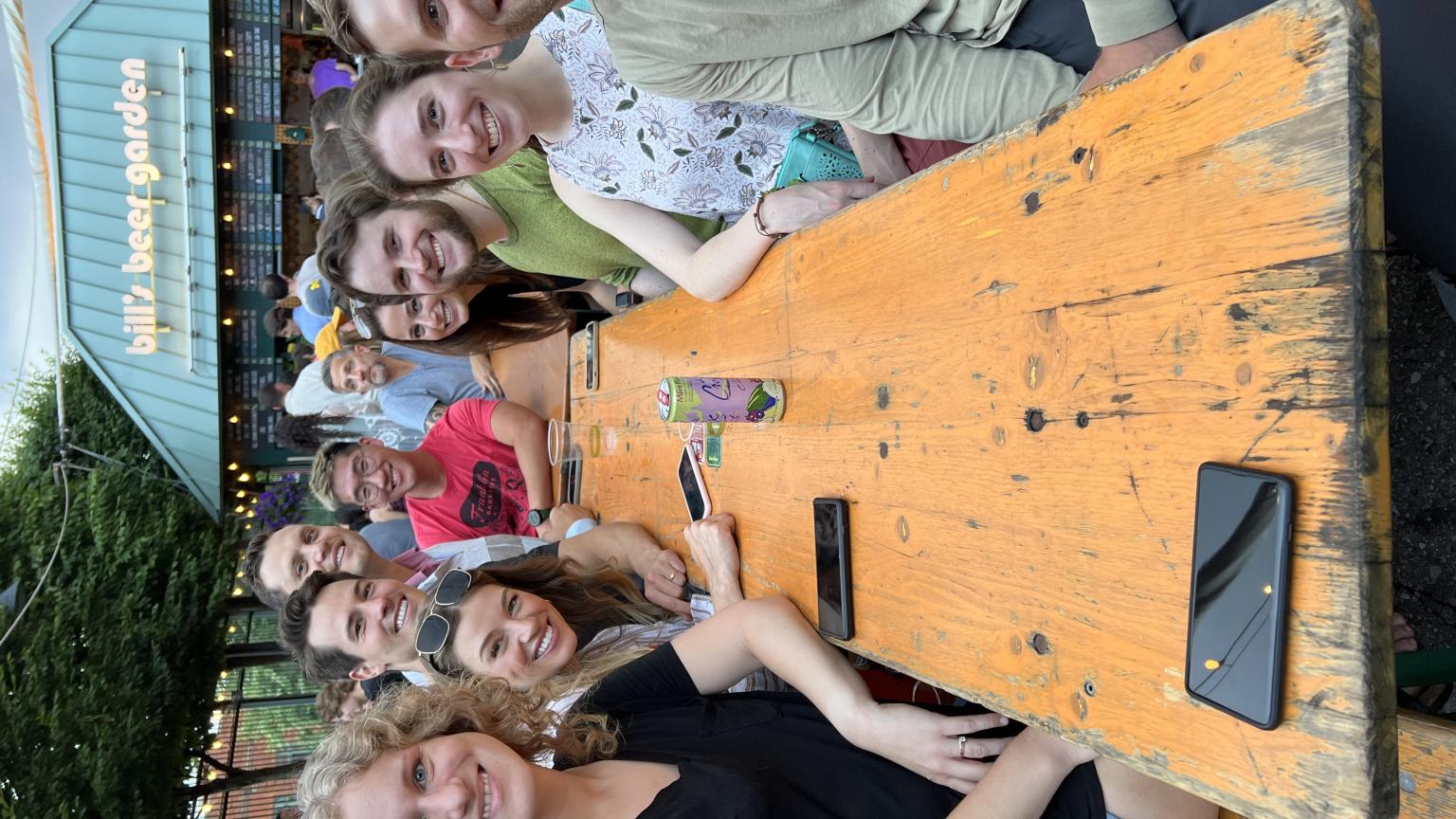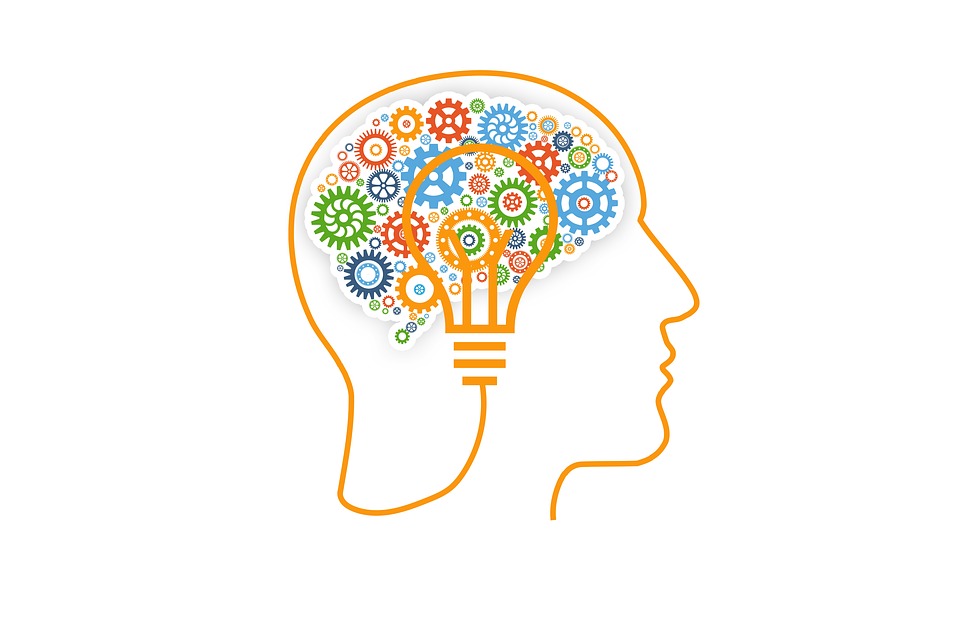From the chiefs:
The University of Michigan Psychiatry Residency program is a solid training program that prepares residents for independent practice in a variety of treatment settings: inpatient, outpatient, emergency, veterans’ care, pediatric, substance use, and forensics, to name a few!
Residents have an incredible amount of faculty support over four years as we hone our medication management skills, apply a wide spectrum of therapy modalities, learn how to manage crises, and gain understanding of the implications of mental health and mental illness within our society. We are so glad we chose U-M for residency during this critical period of learning at the beginning of our careers. At our program, we believe you will find many people and resources to help you achieve your goals, whether you are considering a career in academics or private practice or have specific interests in patient care, education, or research. We hope prospective candidates will consider joining our University of Michigan family!
Sincerely,
Chelsea Loji, D.O.
Rachel Pacilio, M.D.
Andrew White, M.D.
Tucker Zimmer, M.D.
A Day in the Life of a Psychiatry Resident
PGY-1
Anna Visser
Welcome to Michigan Medicine Psychiatry!
I’m Anna, one of the new psychiatry interns. I’ve been loving Intern year so far and I’m excited to share a typical day on inpatient psychiatry! I’m currently on our Ann Arbor Veterans Affairs Acute Inpatient Mental Health (AIMH) unit. This is where we complete three of our four month-long inpatient psychiatry rotations during intern year, with the other inpatient rotation at the University of Michigan Adult Psychiatric Service. We also have first-year psychiatry rotations on the VA Consult-Liaison and Intensive Outpatient Substance Use Disorders services. The other half of the year is spent on off-service rotations in Internal Medicine, Family Medicine, Emergency Medicine, Neurology, and Inpatient Pediatrics, if interested, to round out our general medical training. Below is a typical day.
8:00 – 10:00 am
Days on the AIMH start around 8:00 a.m. I head to the resident workroom - which I share with two of my incredible co-interns and a few medical students - and start the day chart reviewing on my patients. As an intern, my patient assignments are limited to five. This has made the transition from medical student to new resident very manageable, and I still feel as though I’m seeing patients with a variety of presenting psychiatric concerns. After reviewing overnight events, I meet with my patients independently before our daily interdisciplinary team meeting.
10:00 – 10:45 am
I sign into our virtual interdisciplinary team meeting, where each patient’s case is briefly presented and discussed with the attending psychiatrist, pharmacist, nursing, social work, and the team’s therapists. Collaborative care is a priority on both units and certainly improves collegiality and the quality of treatment we provide. I’ve learned so much from my interprofessional colleagues. They’ve been very supportive, making a world of difference in my new role as an intern!
10:45 am – 12:00 pm
After the team meeting, I round on the remainder of my patients and any newly admitted patients with an attending psychiatrist. During rounds, I appreciate being able to watch our attending psychiatrists model expert approaches to patient care, provide feedback on our interview techniques and treatment planning, and give valuable teaching on the fly!
12:00 – 3:30 pm
After rounds, I’ll grab some lunch – breaks are encouraged as a vital part of resident wellness! This is often from the cafeteria at the VA, where more often than not, I’ll find myself in a conversation with another VA employee, patient, or patient’s loved one. There is truly nothing like the camaraderie and friendliness of the folks that frequent the VA. After lunch, I use the rest of the afternoon to wrap up any work I didn’t get to in the morning and finish my notes. I leave work around 3:30 p.m. most days and am home within 20 minutes or so. My short commute is just one of many perks of living in a small, yet vibrant and wonderfully diverse city. This leaves plenty of time to cultivate a healthy work-life balance, making time for those things that are important to me – taking a walk, cooking dinner, and spending time with my husband before calling in for the night with a good book. I’m currently reading a book as part of our psychiatry residency program’s book club, which delves into complex topics within psychiatry and sparks lively discussions about anything from racial bias in medicine to being a caregiver of someone with severe and persistent mental illness.
3:30 – 8:30 pm
One day a week, I have a “short call” shift. I’ll be joined by a psychiatry PGY-2, and we will assess any veterans that arrive in the VA Emergency Department with mental health chief complaints, often deciding whether to admit them to AIMH. This provides us experience with triaging, as well as with managing acute psychiatric complaints such as suicidal ideation, substance intoxication/withdrawal, and altered mental status more broadly. On this rotation we have one or both weekend days off. I’ve been using these days off hang out with my amazing co-interns and explore what Ann Arbor and southeastern Michigan has to offer!
PGY-2
Mike Franklin
Hey Everyone! I'm Mike, one of the current PGY-2s. The PGY-2 year is comprised of rotations on inpatient child, consult-liaison, adult inpatient (at both U-M and the VA), and Psychiatric Emergency Services (PES). Below is a typical day on my recent month on Consult-Liaison Psychiatry at the Main Hospital.
7:45-8:00 am
I bike into work from Kerrytown. I take the path along the river and enjoy the glimpses of the Huron, seeing a few runners on the trail.
8:00 – 9:00 am
I get settled at my desk in the CL workroom on the 9th floor – which has a view out over Ann Arbor - and sip the free cup of coffee I grabbed from the House Officers' Lounge on my walk in. There are multiple different options, but today I went for the cappuccino. I skim the list of new consults and review the morning email from the attending who fields new consult pages to find out who I'll be assigned. I quickly catch up on vitals, lab values and notes for my old patients to figure out who I need to see today before starting to review the chart of the new patient in depth.
9:00 – 11:45 am
I decide to see my new patient first as nothing urgent has come up with any of my other patients. It turns out to be a really interesting case and I get to practice my exam for catatonia. The sub-I and I review facets of the Bush Francis Catatonia Rating Scale on our way to the next patient. Will today be my lucky day where we get to trial an Ativan challenge? We follow up with one patient who is recovering from delirium, and another patient who has been struggling to wean off a ventilator in the ICU due to significant anxiety.
11:45 am – 12:15 pm
I jot a few quick notes down so I don't forget anything important but I'm starving, so I go around the corner to check if my friends on the inpatient unit next door are free for lunch. One of the best things about PGY2 is that 2-3 of us work on the CL team and 2-3 residents work next door, so we get to see each other frequently. Today folks are pretty busy, so I grab food from the cafeteria and take it outside to spend some time in the sun. On Tuesdays, we have didactics from 11-2 so we reliably catch up over lunch those days.
12:15 – 1:00 pm
I staff my patients from the morning and then my attending lets me know we've got a new consult - lithium overdose. I page recommendations to the patients' primary teams and then take some time to remind myself about the medical consequences of taking too much lithium and review with the sub-I how we will determine when the patient is medically ready for transfer to a psychiatric unit.
1:00 – 2:00 pm - We have our daily team meeting with the attendings, the social work team, and the nurses who offer behavioral advice to the floor nurses caring for particularly difficult patients. This is one of my favorite parts of the day. Bits of learning are sprinkled in with the daily jokes from our consult attendings. I am thankful for all the support we get from this team - the social workers often provide info to patients about outpatient resources and complete all the bed searches for patients who need transfer to a psychiatric unit.
2:00 – 5:00 pm - I see my last follow-up patient and then settle in to finish my notes. I really want the neurology service to be consulted on one of the patients I saw earlier in the day and am happy to see that the senior on service is one I worked with as an intern. Today the flow of new consults and staffing went really well. I finish my notes, give some feedback to my student and then head out for the day around 5 pm.
5:00pm - After work a group of PGY1s and 2s are playing pickleball, so I head home to grab a quick snack before we play.
PGY-3
Masha Morris
My name is Masha, and I’m currently a PGY-3 in the general psychiatry residency program at the University of Michigan. PGY-3 is entirely outpatient and takes place mostly at the beautiful Rachel Upjohn Building, with the exception of some community clinics. We each have our own individual offices in which we see patients on a regular 8 AM to 5 PM schedule Monday through Friday. Since the start of the pandemic, much of the experience can be virtual and we have the option of whether we want to work from home or go into the office (unless you have a face-to-face evaluation scheduled). The academic year is divided into two 6-month blocks. Between the two 6-month blocks, we rotate through various clinics (depression, anxiety, perinatal, bipolar, geriatric, substance use) and psychotherapy mentorships (CBT for depression and anxiety, DBT, IPT, couples therapy, and motivational interviewing). The day-to-day schedule varies depending on the day of the week. Here’s an example of my typical Monday schedule.
8:00 - 10:30 am
On Mondays, I am in Anxiety Clinic. The first part of the morning is time for me to see follow up patients that have previously been evaluated. I can typically find time between patients to catch up on documentation.
10:30 am - 12:00 pm
I will have my first new evaluation of the day. I typically spend 60 minutes seeing a new patient, with an additional 30 minutes to staff the case and coordinate treatment. About an hour in, my attending joins me and I present the case to them in front of the patient. We discuss a plan together and I complete my note afterwards.
12:00 to 1:00 pm
Lunch! This is free time to either have a quiet lunch in my office or have lunch outside with my co-residents.
1:00 - 3:30 pm
The afternoon is another new patient slot for me in Anxiety Clinic. I will have two hours to complete the evaluation. The clinic is staffed by some of the leading experts within the field.
3:30 - 5:00 pm
The day wraps up with an anxiety team meeting. I will discuss the new cases with the team and elicit their feedback. We also discuss other referrals and other evaluations completed by the team members.
The above summary is just a snapshot of the PGY-3 experience. In addition to all the various clinics, we also have weekly grand rounds, weekly didactics on Friday afternoons, and two hours of weekly supervision, one each with an individual faculty supervisor and individual psychodynamic supervisor.
PGY-4
Tucker Zimmer
7:30 am - 12:00 pm
I arrive at the University of Michigan Hospital and head up to the ECT treatment room. On arrival the ECT team is just meeting in the room, which consists of 2 CRNAs, ECT technologist, attending anesthesiologist and attending psychiatrist. Prior to each patient’s treatment, I review the medications for the procedures, including sedative and muscle relaxants, with the CRNAs. Once the medications are verified, the ECT technician will bring the patient into the procedure room, where the treatment will start. As the physician of the team, I am responsible for making important clinical decisions, such as checking to see if the patient is relaxed enough for stimulation, monitoring the EEG to determine if it is necessary to terminate a seizure, and deciding if any additional medications are needed to control the patient’s blood pressure or agitation.
On a typical day there are 15-20 patients scheduled for treatment, with each treatment taking around 15 minutes. In between treatments I will often discuss cases, medical choices, and brainstorm plans for any new patients who are starting for the first time with the attending. Throughout this time, I am documenting the treatments, including length of seizures, and any additional medications that were needed pre, peri, or post procedure. Even though there can be around 20 patients a day, by the time the last patient’s treatment is done I am just signing the last note for the morning.
12:00 – 1:00 pm
Time for lunch! Michigan Medicine’s cafeteria has a rotating selection of local food venders.
1:30 - 4:00 pm
After lunch, I meet Dr. Maixner for informal rounds on patients in the hospital who are receiving ECT. We head up to the inpatient psychiatry unit, 9C, to talk to the residents providing care for the patients receiving ECT about their current symptoms and ECT course. Afterwards, we head to the medical wards to see patients on the consult service receiving ECT and discuss their case with the residents and attendings caring for them. Afterwards, we have some didactic time to discuss the finer points of the practice and history of ECT.
Chief Residents
Chelsea Loji, D.O.
Rachel Pacilio, M.D.



